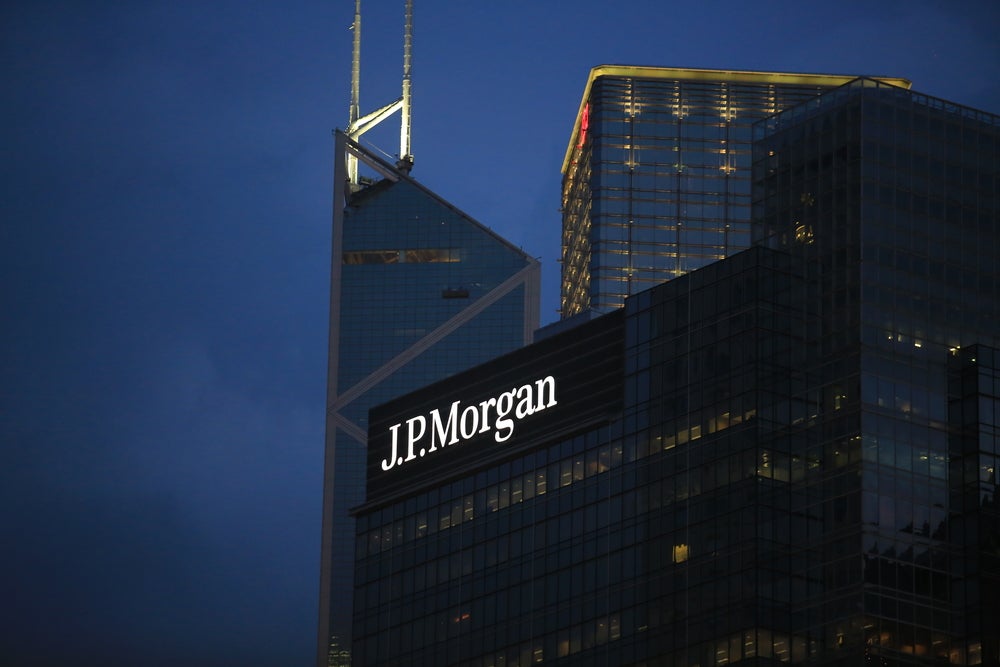Gold is a traditional safe-haven investment, a port in the storm for worried investors as concerns over the Eurozone drive uncertainty. But does it merit that reputation? And can demand from China and India help its remarkable upward trend continue? Thomas McMahon reports
In January gold entered the 12th year of a bull market, while over the past ten years the precious metals price rose an average of 18.1% per annum. Last year saw a record price high of $1895 an ounce in September, around 30% up on the price at the start of the year, before a dip took the price back down to 1531, still up 9% on the year in dollar terms.
The commoditys rise seems unstoppable. And private bankers report that the metal is getting a lot of attention from their clients.
However, The Sage of Omaha himself, Warren Buffet, has scorned gold as an investment. In a letter to Berkshire Hathaways investors on publication of the groups annual results this February, he compared the demand for gold to the Dutch craze for tulips in the seventeenth century that ended in a massive stock market bust.
"What motivates most gold purchasers is their belief that the ranks of the fearful will grow," Buffet said. Investors in gold are bandwagon investors who are creating their own truth, but only for a while, he added.
So what should we think of this commodity? Is it a prudent hedge or is its rise likely to end in a bust like the Dutch tulip mania or the dotcom crash?
How well do you really know your competitors?
Access the most comprehensive Company Profiles on the market, powered by GlobalData. Save hours of research. Gain competitive edge.

Thank you!
Your download email will arrive shortly
Not ready to buy yet? Download a free sample
We are confident about the unique quality of our Company Profiles. However, we want you to make the most beneficial decision for your business, so we offer a free sample that you can download by submitting the below form
By GlobalData
A perfect storm
Oliver Gregson, head of product development at Barclays Wealth, says: "The price high last year came in the middle of the perfect storm for gold."
He identifies four key contributing factors.
Firstly, the last decade has seen the democratization of the asset class.
"Previously gold was very difficult to access for the individual investor. Over the past decade commodities have moved from the fringes of investment concern to the centre," he says.
Secondly, the growing confidence in future price rises has discouraged producers from selling forward into the market, and has thereby removed a downward pressure on prices.
The fall in the value of the US dollar is a third factor, while finally, he adds: "It is perceived, and we need to stress perceived, as a safe haven asset. Since the credit crunch that dynamic is very important."
Cesar Perez, chief investment strategist EMEA for JP Morgan Private Bank, explains: "The benefits of gold in a diversified portfolio include a significant, consistent negative relationship with the US dollar, a modestly positive correlation with inflation and also a role as a geopolitical risk hedge.
"Furthermore, over the years, gold trends have had little to do with equity trends, underscoring the effectiveness of gold as a diversification vehicle in a portfolio."
Perez adds that the liquidity measures implemented by global policy makers are creating inflationary pressures that are pushing investors to gold.
Asia drives demand
Research from the World Gold Council shows the growth in the metals appeal. Demand for gold bars and coins rose 24% year-on-year from 1,200 to 1,487 tonnes, while overall demand for investment purposes rose by 4.67% from 1,568 tonnes to 1,640.
The relatively lower increase in overall investment demand is due to the slump in demand for exchange-traded funds (ETFs) and similar instruments, which shrank by 58%.
The World Gold Council suggests this fall is exaggerated by exceptional demand in the second quarter of 2010, which came in at 292 tonnes, more than three times the second highest quarter in 2010 and 2011. And it is true that demand for ETFs grew stronger through the year, from 52m tones in the second quarter, to 78m in the third and 87m in the fourth.
But some suggest the year-on-year trend is more significant.
Angelos Damaskos, CEO of sector investments and fund adviser for the Junior Gold Fund, says: "Investors concern is that ETF products are not backed by bullion."
Barclays Gregson agrees, and says: "Counterparty risk is something that investors are increasingly aware of."
Demand for gold in emerging markets is particularly strong, reflecting in part concern over Western economic turmoil. According to World Gold Council figures, China and India account for over 50% of worldwide demand.
Bar and coin investment in China rose from 187m tones in 2010 to 266m, and overall investment demand from 667m to 811m. Marcus Grubb, managing director for investment at the World Gold Council, predicts that China will overtake India this year as the country with the largest share of demand.
And, although overall investment demand in India fell slightly last year from 1006m tones to 933m, Grubb thinks demand there will stay strong, buoyed by golds strong religious and cultural role in the country.
Central banks: the new net buyers
A new development in 2011 was the emergence of central banks as net buyers.
Mexicos central bank was the largest net buyer, adding almost 100 tonnes to its reserves. Russia was the second largest, purchasing 95 tonnes during the year and 33 tonnes in the fourth quarter alone. Meanwhile the central banks of Thailand, South Korea, Bolivia and Venezuela also purchased significant amounts during the year.
Commentators such as Gregson explain that the institutions recognised the need to diversify given the challenging economic circumstances.
Another factor supporting gold prices is supply. Growth in mine production is slow while the expense of exploration is high and often leads to long lead-in times before the product is brought to market.
Grubb says that these days new deposits are being found in more unstable geography, further increasing the costs and risks involved. And the quality of the deposits is also declining. According to Grubb, finds of 6 grammes per tonne were common in the past, whereas contemporary finds are likely to be in the 1-3 grammes per tonne range.
World Gold Council figures record a modest increase of 4% in mine production last year, with overall supply dropping due to the effects of official sector purchases (those by central banks, the IMF and the ECB) and due to a contraction in recycling activity.

Volatility
One key feature of 2011 that raised doubts about the wisdom of investing in gold was the volatility of its price. There were serious dips in September and December, when the price retreated from its high 30% up on 2010.
In part this was due to the strengthening of the US dollar, but in part it was evidence of a worsening macroeconomic situation. As investors looked to cover losses incurred elsewhere, gold was one of the few liquid assets with positive returns they could sell.
Although the fall of 15% seemed to some to be the end of golds long-term upward trend, World Gold Council research shows that it was not the first such pullback to be followed by a resumption of a rise. On six previous occasions over the past decade the price of gold has fallen by more than 10%, and each time has stabilised and resumed its upward trajectory.
In fact, last Septembers fall was less pronounced than the drop in price seen in 2008, and even then, gold rose to finish the year with positive returns.
Gold contrarians like to draw attention to the price peak in January 1980, when gold hit an all-time high in inflation-adjusted terms of $850 an ounce. By mid-March the price had slumped back down to $481.5 and didnt reach even that nominal high until 2006. Is this pattern of boom and bust likely to be repeated?
Keeping an eye on policy
Marcus Grubb suggests a comparison of the two bull runs is informative. Plotting the two peaks on a chart, from the early 1970s when the US came off the gold standard to 1980, and from 2000 to 2012, you see very different patterns. In Grubbs view, the later period shows an orderly rise not like a bubble.
Gold remains an increasingly important commodity to consider as part of any private client portfolio, despite this long-running debate on its value.
In their 2012 investment outlook, Coutts advises investors to note last years increased volatility may continue. However, they still see prices rising in 2012, writing that central bank purchases and negative real interest rates were two of the drivers providing the asset class a positive outlook.
Barclays Gregson adds: "While real interest rates are still negative, gold we think will remain supported. Real interest rates being negative are very important for a commodity with no utility function."
For JP Morgan, Perez says a genuine shift to the hawkish side of the central bank spectrum would be a challenging factor for gold.
"Keeping a keen eye on policy is key for gold investment," he adds.
"We believe gold will continue to do well as long as central banks continue to expand their balance sheets and/or real rates are negative or zero."
Damaskos says these supporting factors are likely to continue to push prices up.
"As the debt problems of the developed world are unlikely to be solved for the next 5-10 years, we will see a continued upward trend in gold prices," he adds.
He suggests we are unlikely to see the top of the gold market until the global economy is growing much more strongly, the unemployment rate is dropping and central banks have stopped printing money.
"And there is also the significant risk of unrest and conflict in the Middle East," he says.
Gold continues to glitter in 2012
There is strong agreement that golds bull market is likely to continue. Certainly clients, as the volatility in the markets spurs them to take more of an interest in their investments, are likely to continue to show interest in it.
Ironically, the same worsening of the macro-economic situation that has fuelled golds rise was also responsible for its dips in 2011. As investors looked for liquidity they sold off their gold, and this may happen again.
Furthermore, the influence of policy decisions on the metals performance is another potentially destabilising factor.
With the economic storm showing no sign of abating, the same downside risk remains in 2012. In short, even this safe haven asset can be adversely affected by macroeconomic factors. Diversify remains the watchword.







